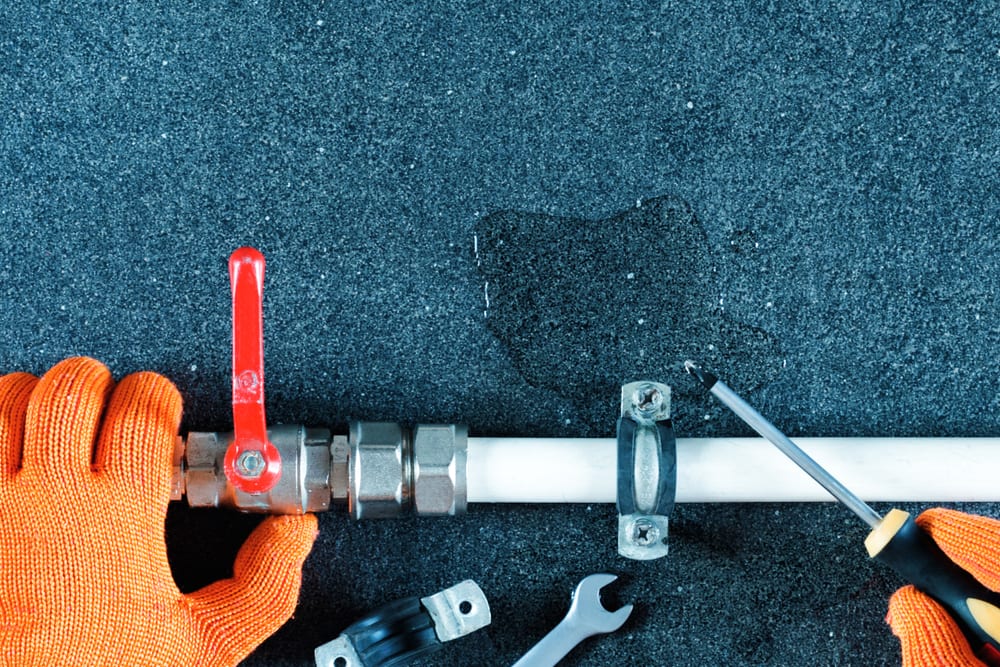Here below you will find a bunch of good quality information about Leaking water lines.

The moment you discover a leakage, calling your plumber for repair work is the very best service. Nevertheless, some small water leaks may not be visible. Here are some hacks that help if you can not detect it with your nude eyes.
Early detection of dripping water lines can alleviate a prospective calamity. In addition to conserving you money, it will certainly reduce the stress and stress.
Examine Water Usage
If you identify abrupt changes, in spite of your consumption being the exact same, it indicates that you have leakages in your plumbing system. An abrupt spike in your bill indicates a fast-moving leak.
A constant rise every month, also with the very same practices, reveals you have a slow leak that's also slowly rising. Call a plumber to thoroughly inspect your property, especially if you really feel a cozy location on your floor with piping underneath.
Examine and Evaluate the Situation
Homeowners need to make it a practice to examine under the sink counters and even inside closets for any type of bad odor or mold and mildew growth. These 2 warnings indicate a leakage so punctual focus is required. Doing routine examinations, even bi-annually, can save you from a significant trouble.
Examine the Water Meter
Examining it is a surefire way that aids you find leakages. If it moves, that shows a fast-moving leak. This indicates you may have a sluggish leakage that might even be underground.
Asses Outside Lines
Don't fail to remember to examine your outdoor water lines as well. Examination spigots by affixing a garden pipe. Needs to water seep out of the connection, you have a loosened rubber gasket. Change this and guarantee all links are limited. It will certainly help get it professionally analyzed and maintained annually if you've got a lawn sprinkler system. One little leakage can throw away lots of water as well as surge your water bill.
Do a Food Coloring Test
When it comes to water intake, 30% comes from toilets. If the color in some way infiltrates your dish throughout that time without flushing, there's a leak in between the container and also dish.
More significantly, if you recognize your home is already old, keep a watchful eye on your heaters, hose pipes, pipes etc. Look for stainings and also damaging as a lot of home appliances and pipelines have a life span. They will also normally degrade because of wear and tear. Don't wait for it to rise if you presume leaking water lines in your plumbing system. Call an expert plumber immediately so you do not end up with a dreadful mess in your home.
The moment you find a leak, calling your plumber for repair work is the finest option. Some small water leakages may not be visible. Inspecting it is a proven means that aids you uncover leakages. One small leak can squander loads of water and surge your water expense.
If you think leaking water lines in your plumbing system, don't wait for it to intensify.
How to Know If Your Home Has a Hidden Leak
Water Meter Reveals Inexplicable Water Usage
If you’d like to test whether or not there’s a leak somewhere in your home, you can do this using your water meter. Here is how to conduct the test:
Don’t use any water in your home for at least 30 minutes; this also means not turning on faucets or water-using appliances.
Go outside, and check your water meter for activity.
If your water meter shows that there was activity, even though no one was using any water, this proves that there is a leak in your home.
Visible Mold or Mildew Growth
Leaks behind walls create moist, dark environments that allow mold and mildew to grow and thrive. Eventually, you might see mold growth forming on the wall closest to a hidden leak.
If mold is growing in an area that receives a high amount of moisture, such as a bathroom, it may simply be an indication that better ventilation is needed. However, if you see mold growth on a wall or the ceiling in an area where you would not expect, you probably have a hidden leak.
Musty, Mildew Odor
Sometimes you might not be able to see the mold or mildew that is growing as a result of a leak. However, the smell can give the problem away just as easily. If you catch a whiff of something musty, there’s a good chance that old water is collecting somewhere in your home that you can’t see.
Stained/Warped Walls, Ceilings, or Floors
When your home soaks up water, a variety of red flags can become visible, including ceiling stains, bubbling drywall, warped walls, and sagging floors. While these issues can be caused by excess humidity, they can also be signs that a pipe or plumbing connection has started leaking behind your walls.
Inexplicably High Water Bill
After a while, you get a general sense for what your water bill should be. If you own a pool or sprinkler system, your bill will tend to be higher during summer. However, if you receive a water bill that seems especially high, and you can’t figure out what caused it, then you may have a hidden leak somewhere that’s increasing your bill.
https://www.plumbingjoint.com/blog/2019/july/how-to-know-if-your-home-has-a-hidden-leak/

Do you like reading about Finding hidden leaks? Make feedback below. We'd be glad to find out your thinking about this write-up. Hoping that you come back again before long. Kindly take the time to distribute this entry if you enjoyed it. Thanks a lot for your time spent reading it.
Schedule Service Pickup
Comments on “Expose Hidden Water Line Leaks: 6 Proven Ways for Detecting”